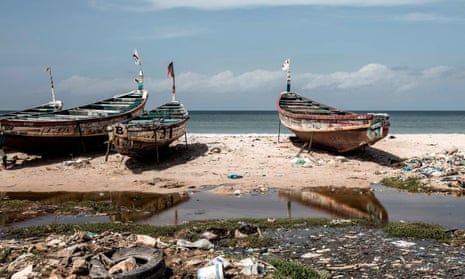Efforts to combat a looming debt crisis in the world’s poorest countries are being hindered by a lack of up-to-date, reliable figures showing how much individual nations owe, the World Bank has said.
The Washington-based institution highlighted “massive gaps” in the data, with 40% of low-income countries failing to publish any figures on their sovereign debt in the past two years.
At a time when the global pandemic has driven debt to dangerously high levels, a World Bank report said estimates “cobbled together” from a variety of sources made it harder to deal with the problem.
The Bank, which released figures last month showing a 12% jump in poor-country debt during 2020, said monitoring the situation relied on a patchwork of databases with different standards and definitions and different degrees of reliability.
Inconsistencies were leading to large variations in publicly available tallies of debt in low-income economies – the equivalent of as much as 30% of a country’s national output, in some instances.
David Malpass, the World Bank’s president, said the report was sobering and made the case for urgent reform. “The poorest countries will emerge from the Covid-19 pandemic with the largest debt burdens in the last few decades but limited debt transparency will delay critical debt reconciliation and restructuring,” he said.
Last month, Malpass said that of the of the 74 countries eligible for soft loans and grants through his institution’s International Development Association arm, more than half were “in external debt distress or at high risk of it”.
The World Bank said of the countries that had published data in the past two years, many had limited the data to central government debt. Many commodity-rich developing countries have been relying increasingly on resource-backed loans – in which they secure finance from lenders by putting up future revenue streams as collateral.
Resource-backed loans accounted for almost 10% of new borrowing in sub-Saharan Africa between 2004 and 2018, the Bank said. More than 15 countries had such debt but none provided details on the collateral arrangements.
The bank’s report, Debt Transparency in Developing Economies, expressed concern that low-income countries were starting to use central-bank repurchases and foreign-currency swaps to support external borrowing rather than as tools of monetary policy. “These operations do not show up in government debt statistics, and the databases of international financial institutions do not capture them either,” Malpass said.
“Improving debt transparency requires a sound public debt-management legal framework, integrated debt recording and management systems, and improvements in the global debt monitoring. International financial institutions, debtors, creditors and other stakeholders, such as credit-rating agencies and civil society, all have a key role to play in fostering debt transparency.”
The bank said it had long considered debt transparency a crucial step in countries’ development strategies because being open led to new investment, improved accountability and helped reduce corruption. All countries that borrow from the organisation – more than 100 in total – were required to report details of external debt owed by any public agency.
